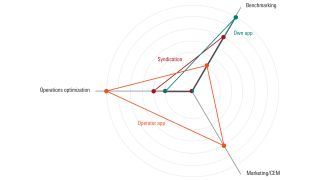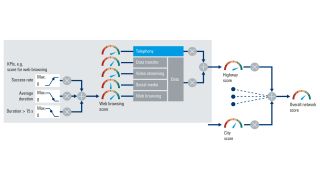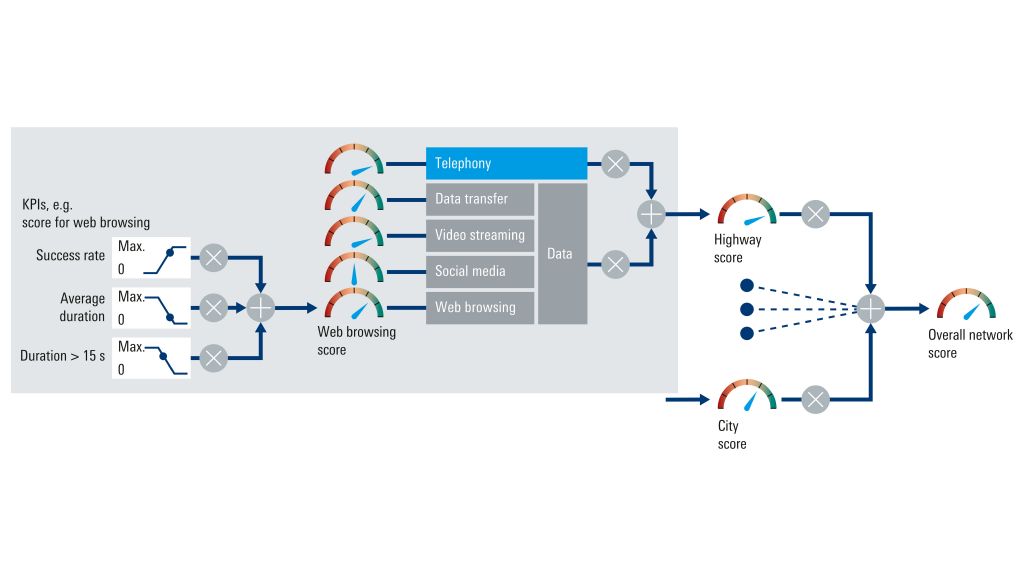Mobile network testing solution
Drive and walk tests are dedicated mobile network test concepts. Dedicated smartphones (commercial UEs) and network scanners are used in a controlled test setup (temperature and RF shielding as far as possible) and perform a set of test cases reflecting end-user behavior. Voice services (telephony) and data services (data transfer, video streaming, social media and web browsing) are the most commonly used services and account for the vast majority of traffic volume in mobile networks.
ETSI TR 103 559 describes best practices for robust network QoS benchmark testing and scoring. The technical report provides a recommendation for how to test the quality of mobile networks based on end-user perception.
The Rohde & Schwarz network performance score implements the ETSI method.
Applications are tested in line with the following three categories:
- Accessibility – service availability, e.g. dropped calls
- Waiting time – call setup time
- Media quality – picture quality or speech quality
The results are mapped to a point scale and an aggregated score is generated reflecting end-user perceived quality (a streamed video that cannot be started is more severe than slightly reduced video quality and gets a higher weighting).
For further details and explanations, go to:
www.rohde-schwarz.com/nps








